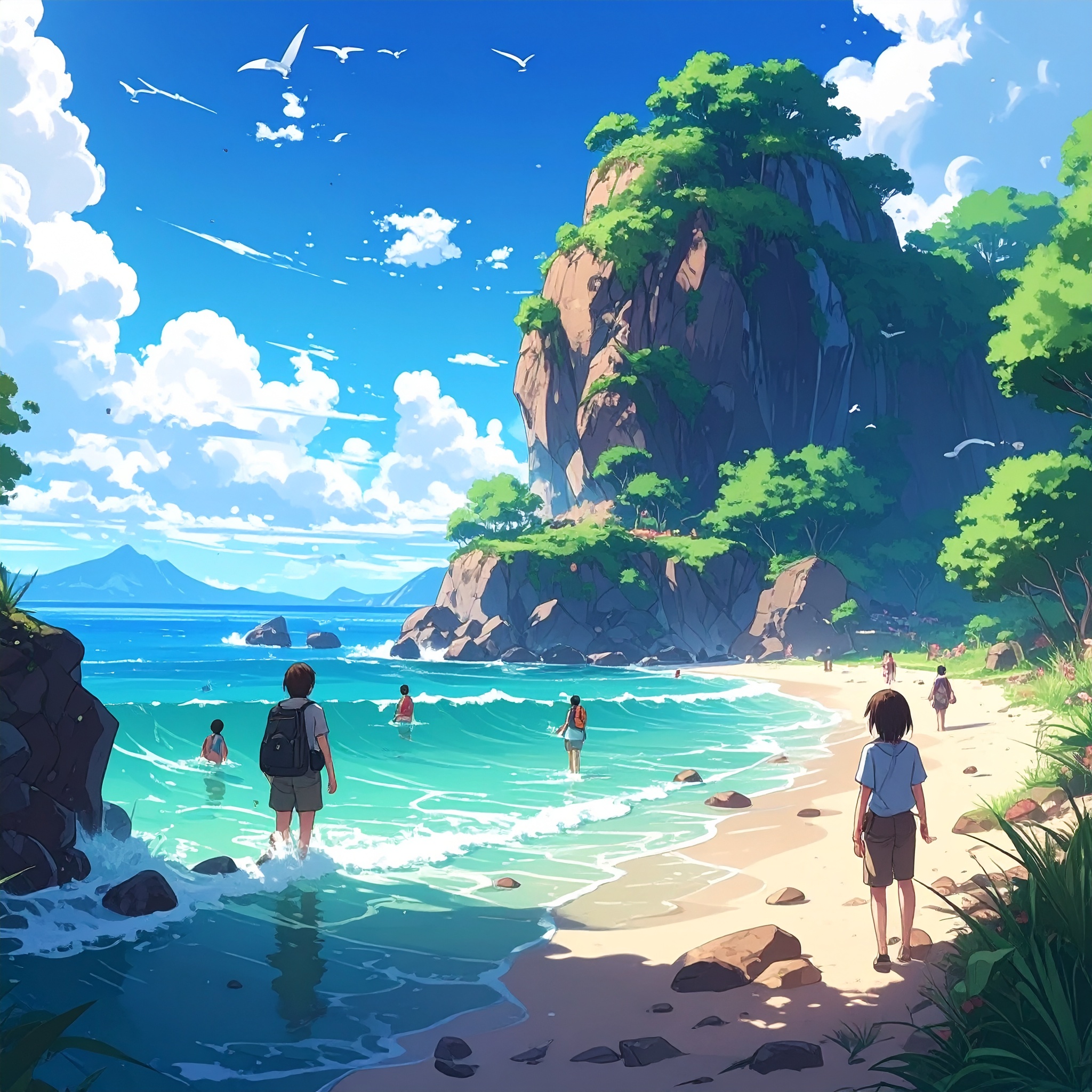Traveling through Japan, I was often struck by the thought: “This looks just like a painting.” From mountains and rivers to neighborhood streets, shrines, and hidden alleyways, every walk revealed scenes so beautiful they felt made for postcards. It was as if nature and city alike were saying, “Take my picture!”—and they meant it.
What amazed me most wasn’t just the famous spots—it was the everyday scenery. Tree-lined avenues in front of train stations, traditional shop curtains (noren), flower beds in residential neighborhoods, sakura trees standing guard at elementary schools—all these scenes were effortlessly harmonious. There’s no theatrical staging, yet everything feels balanced and thoughtful. Even a quick snapshot can come out beautifully framed.
In Kyoto, I found myself endlessly photographing vermilion torii gates, dappled sunlight in bamboo groves, and stone-paved paths. In Hokkaido’s countryside, I was captivated by the vast skies over simple fields. And in Okinawa, the glistening sea just before sunset carried a silence too profound for words.
Japan’s four distinct seasons add another layer of magic. Cherry blossoms in spring, lush green foliage and fireworks in summer, autumn’s fiery hues, and winter’s snowy blankets—each season paints everyday scenes in completely new ways. You don’t need to be a professional photographer to find vistas that beg to be captured. Before you know it, your camera roll is bursting with shots.

Historic temples and shrines take on new faces depending on the light and time of day—early morning, with barely anyone around; the soft, drifting shadows of twilight; the hushed atmosphere after rain. Each combination of light and mood creates a one‑time‑only scene, as if both the place and your feelings are being captured in that exact moment.
Even backstreets and hidden alleys offer charm. Clothes gently swaying on a balcony, blossoms blooming through cracks in a stone wall, children’s laughter echoing nearby—these aren’t in guidebooks, but they’re precisely why a trip to Japan leaves such a vivid mark on the heart. When you lift your camera, you don’t feel like a tourist—you feel like a guest in someone’s daily life.
Japan’s nights offer their own special magic. Lanterns illuminating hot spring towns, glowing signboards outside izakayas, rivers reflecting streetlights. Japan after dark feels both peaceful and dreamlike, like stepping into a story. Even neon and light fixtures seem thoughtful, lighting just what’s needed.
During my trip, I sometimes felt I didn’t need my camera after all—my heart had already captured the moment. But then I’d turn it on again, thinking I’d like to show this scene when someone asks, “What was Japan like?”
You don’t need a fancy camera here—every moment sparks wonder on its own. No need for perfect angles or filters. When I return, I plan to first simply see with my eyes, feel with my senses, and then quietly press the shutter.
A journey through Japan leaves you with memories deeper than photographs. Everywhere you look, it’s like stepping into a painting. And being simply present in that beauty—that might just be the true luxury of travel.




